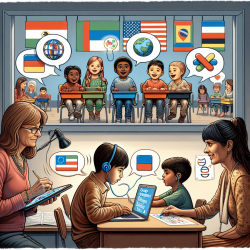As practitioners in the field of special education and online therapy, staying informed about the latest research and best practices is crucial for providing the best possible services to our students. One particularly valuable resource is the research article titled "Creative (Canadian) Communication," which offers insightful guidance on enhancing communication skills in educational settings. This blog post aims to help practitioners improve their skills by implementing the outcomes of this research or by encouraging them to delve deeper into the study.
Understanding the Research
The article "Creative (Canadian) Communication," reviewed by Elisabeth P. Brandt, PhD, covers a comprehensive range of topics related to communication in educational settings. It begins with non-verbal communication and progresses through the development of speech and language in infants, classroom listening skills, speech activities, speech disorders, expression in writing, linguistics and grammar, handwriting, reading skills, and various means of enjoying literature, including choral speaking and creative dramatics.
One of the key takeaways from this research is the emphasis on developing language skills not as isolated goals but as tools for creative expression and communication. This holistic approach is particularly beneficial for practitioners looking to foster a more integrated and effective learning environment for their students.
Practical Applications for Practitioners
Here are some practical ways to implement the outcomes of this research in your practice:
- Emphasize Non-Verbal Communication: Start with activities that encourage students to express themselves without words. This can include facial expressions, gestures, and body language exercises.
- Develop Listening Skills: Incorporate listening activities that are engaging and interactive. This could involve storytelling, listening to audio books, or participating in listening games.
- Focus on Speech Activities: Encourage students to participate in speech activities that are fun and stimulating. This can include debates, storytelling, and role-playing exercises.
- Address Speech Disorders Early: Be proactive in identifying and addressing speech disorders. Early intervention is key to helping students overcome these challenges and improve their communication skills.
- Integrate Writing and Reading Skills: Combine writing and reading activities to create a more cohesive learning experience. For example, have students write their own stories and then read them aloud to the class.
- Use Creative Dramatics: Incorporate drama and role-playing into your lessons to make learning more dynamic and engaging. This can help students better understand and retain the material.
Encouraging Further Research
While the "Creative (Canadian) Communication" article provides a solid foundation, it's important for practitioners to continue exploring new research and methodologies. Here are a few ways to stay informed and engaged:
- Attend Conferences and Webinars: These events offer valuable opportunities to learn from experts and network with other professionals in the field.
- Subscribe to Relevant Publications: Journals and magazines focused on special education and communication can provide ongoing insights and updates.
- Join Professional Organizations: Membership in organizations such as the American Speech-Language-Hearing Association (ASHA) or the Council for Exceptional Children (CEC) can offer access to resources, training, and professional development opportunities.
- Engage in Peer Discussions: Collaborate with colleagues to share experiences, strategies, and new research findings. This can help you stay current and continuously improve your practice.
Conclusion
By implementing the outcomes of the "Creative (Canadian) Communication" research, practitioners can enhance their skills and provide more effective support to their students. This holistic approach to communication and language development can lead to better outcomes and a more enriching educational experience for all involved.
To read the original research paper, please follow this link: Creative (Canadian) Communication.










